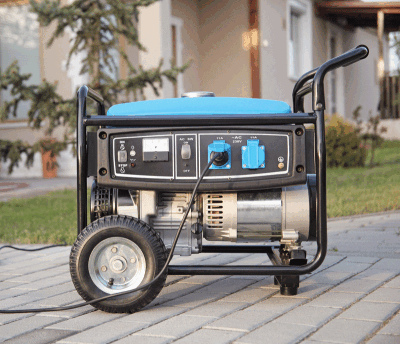METRO DETROIT — It’s been 20 years since metro Detroit and a large portion of the northeastern United States underwent a massive blackout that lasted for a couple of days.
Much like that blackout, homeowners never know when a power outage will strike, but they can be prepared for when one occurs.
According to DTE Energy, the majority of power outages in the U.S., around 62%, are caused by weather or tree-related incidents. Other outage causes include equipment failure, public or animal contact, power grid failures or maintenance.
The company states that, during a major storm, its priority in power restoration starts with hospitals, nursing care facilities, police and fire stations, radio and television stations, and sanitary pumping facilities. The focus after those facilities turns to households and businesses, starting with electrical circuits where the largest numbers of customers are without power.
There are efforts that residents can take to mitigate any potential damage to their appliances or to restore some power to their homes.
Many homeowners might turn to purchasing their own standby generators to get some power back. Maria Handlen, the office manager for Joe Pizik Electric in Troy, said the type of generator to buy can depend on what a homeowner is looking for.
“You know what you want to operate when the power is out. So that determines what size (for a generator),” she said. “So you kind of know what you want when the power does go out. … Some people want furnaces, and some people don’t want the AC; some do.”
Air-cooled generators can run from $8,000 to $15,000, Handlen said, and they can go up higher if you’re looking for a liquid-cooled generator.
“Some homes have to have liquid cooling because they’re so big,” she said. “Let’s say if (your home is) 6,000 square feet and got multiple furnaces and AC’s, you’re going to have to go with a liquid-cooled unit. Air-cooled ain’t gonna work for your home. So most average homes, you know, 4,000 (square feet and) under, 5,000 (square feet and) under can operate with an air-cooled generator.”
Handlen noted that it’s hard to get generators installed because there’s a lot involved in the process.
“Generators start at just under $4,000 for a standby generator. That’s the cost of the generator. Then you get mechanical and your electrical. You know, there’s two trades, you gotta have permits. There’s a lot involved. I mean, it’s an all-day job,” she said. “Inspections that gotta happen. I mean, you got a mechanical guy doing all the gas piping, you got an electrician, multiple electricians there installing this. It’s a pretty big deal.”
For people who get portable generators instead of standby generators, Jack Blanchard, Berkley’s emergency manager and former city councilman, said homeowners should not have a generator run too close to their home or window, as it might lead to carbon monoxide entering the house.
“We see that some people just set it outside the window so they can run a cord in a window or something, and then they’re getting exhaust fumes in and don’t even realize that,” he said.
Outside of purchasing a generator, some tips for when the power goes out can be as simple as keeping fridges and freezers closed for the outage’s duration.
Blanchard said this is important for food safety. He also said it’s important to unplug all appliances while the power is out.
“(It’s) to make sure that when the power comes back on, you get a surge, your computers are not going to get blasted so that they will survive. Any other major appliances, you should shut down the power by (turning off) the circuit breakers.”
Some homeowners also might have to be concerned about pets that depend on electrically powered habitats, such as fish.
Ethan Fogle, owner of Fishy Bizz in Farmington, said owners can obtain battery-powered air pumps to keep the oxygen running in their fish tanks.
“If you’re worried about getting really hot, you can just do, like, cold water changes, do a water change on the tank and, you know, use cooler water to kind of cool the water down … so it doesn’t get too hot for the fish, and then, like, a battery-powered air pump so you can keep oxygen going,” he said.
In terms of how quickly a fish owner needs to act to get a battery or change water, Fogle said this depends on the size of the tank and the fish.
“A bigger fish is gonna use oxygen up a lot quicker,” he said. “So there’s more urgency with larger fish. … They’re larger so they’re gonna use the oxygen up in the water quicker. The urgency is more with them versus smaller fish that really can live in small amounts of water, don’t use as much oxygen.
“So the larger the fish, the quicker you want to act on making sure that there’s oxygen going in the tank with a USB air pump or a battery-powered air pump and then cooling the tank, too. It doesn’t really have anything to do with the size. It’s just if it gets too warm, they don’t do well and when the water gets warmer, the oxygen levels drop naturally,” Fogle said.
 Publication select ▼
Publication select ▼






















